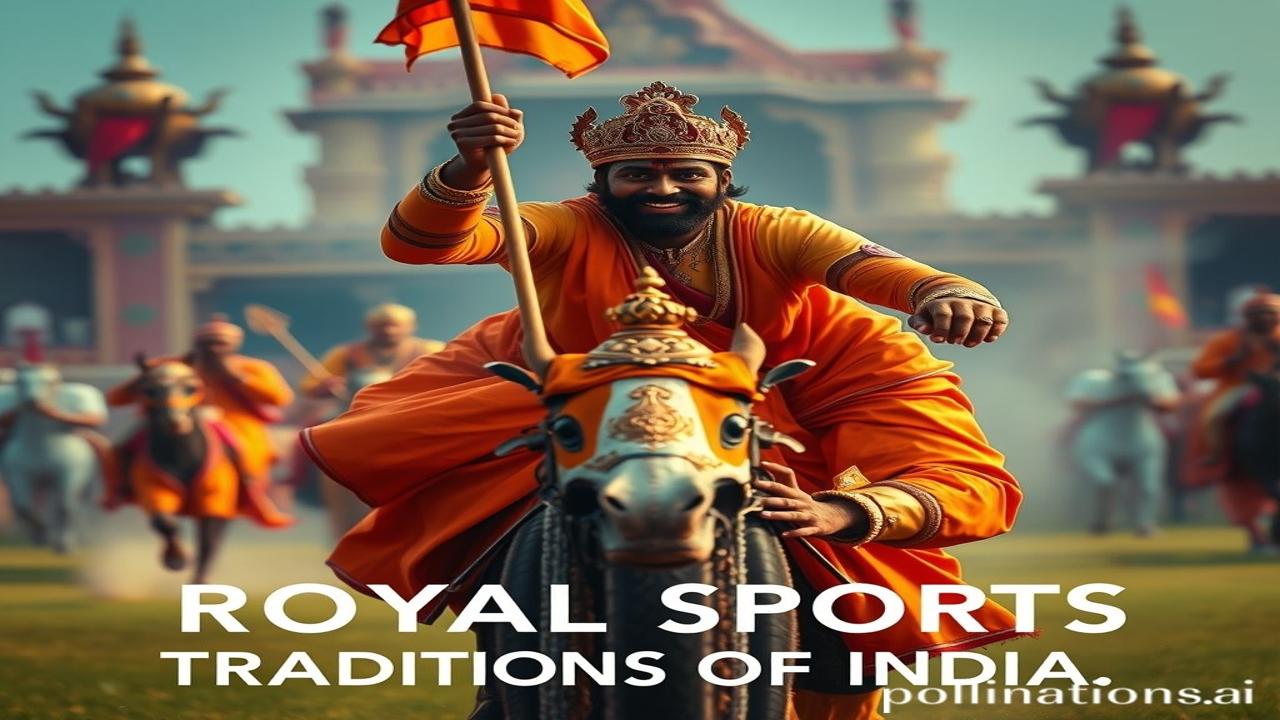Shahi Shauk: Unveiling the Royal Sports Traditions of India
Kabhi socha hai, haathi ke daanto se bane chaupar ke dayon pe, kings aur queens kya sochkar khelte the? Waqt ki dhool mein kuch aisi hi shahi kahaniyan chhupi hain, jo humein India ke royal sports traditions ki taraf le jaati hain. Let’s uncover these hidden gems!
Royal Games: It’s More Than Just Fun & Games!
Royal sports traditions in India are much more than just pastimes. They are a window into the values, power structures, and social dynamics of bygone eras. Think of it as a royal family ka Netflix! From wrestling matches in the courts of the Mughals to the elaborate hunting expeditions of the Rajputs, these activities were intertwined with demonstrating strength, building alliances, and maintaining royal prestige.
These traditions stretch back centuries, with evidence found in ancient texts like the Mahabharata and the Arthashastra. We’re talking about a history that goes back millennia! Specific timeframes depend on the sport, of course. Mallakhamb, for example, has roots that go back to the 12th century, while Polo (Chaugan) arrived with the Turkic rulers around the same time. What’s important to remember is that these weren’t just games; they were strategic exercises in leadership and display of royal authority.
Zameeni Sach: Life Amongst the Royals and the Players
Imagine the scene: Akbar, the Mughal Emperor, keenly observing a wrestling match in his court. The air is thick with the scent of rosewater and musk. Wrestlers, with bodies oiled and glistening, grapple with fierce intensity. Courtiers whisper bets. The sounds of drums and shehnais fill the air. This wasn’t just entertainment; it was a matter of state!
“Arre Waah! Kya pehelwan hai!” exclaimed one courtier, as a particularly powerful wrestler slammed his opponent to the ground. Akbar himself would often personally reward the victors, bestowing upon them titles and land grants.
Similarly, think about the Rajputs on a hunting expedition. Raja Jai Singh, astride his magnificent Marwari stallion, leads the charge. The air is crisp and smells of damp earth and gunpowder. They were not merely hunting for sustenance but honing their military skills and forging bonds of camaraderie. Each kill was a symbol of their strength and dominance.
The artisans, too, played a crucial role. They crafted the exquisite weapons, the luxurious hunting garments, and the ornate chessboards that defined these royal pastimes. Their skills were integral to upholding the royal image.
Dharohar aur Pehchan: Echoes of Royalty Today
While the days of royal courts and elaborate hunting expeditions are largely gone, the spirit of these traditions lives on in various forms. Think of the Jallikattu festival in Tamil Nadu, a bull-taming sport that harkens back to ancient warrior traditions. Or consider the continued popularity of games like Polo, now a global sport, but with roots deeply embedded in Indian royal history.
Mallakhamb, once patronized by princely states, is now a recognized sport in India, demonstrating incredible physical strength and agility. These games, in their modern iterations, connect us to our Bharatiyata, reminding us of the valor, discipline, and artistry that once defined the royal courts of India.
Even the language we use retains traces of these traditions. Words like “shatranj” (chess) and “pehla” (first, stemming from the word “pehelwan”) are constant reminders of the royal sports that once captivated the nation.
Mazedar Tathya or Bhram-Bhanjak: Debunking the Royal Myths
Log samajhte hain ki royal sports sirf raja-maharajaon ke liye the… lekin asli sach yeh hai, these traditions often had a wider social impact. Wrestling, for example, was practiced by commoners as well, providing a means of social mobility and recognition. While the elite versions were highly elaborate, the underlying spirit of competition and physical prowess was shared across society.
Another common misconception is that hunting was solely for the thrill of the kill. In reality, hunting expeditions were often carefully regulated events, with strict rules and rituals designed to maintain ecological balance. They were also seen as a form of pest control, protecting agricultural lands from destructive wildlife.
Drishya aur Bhavnayein: A Sensory Journey
Imagine stepping into a Mughal court during a game of chess. The air is filled with the soft murmur of conversation and the clinking of jeweled pieces. The scent of attar lingers in the air, mingling with the aroma of spices from the royal kitchen. The tapestries on the walls depict scenes of epic battles and royal processions. The sounds of sitars and tablas provide a soothing background melody. The smooth coolness of the marble floor under your feet, the weight of a gemstone-encrusted chess piece in your hand – a symphony of sensations!
Or picture yourself in a Rajput hunting camp at dawn. The air is crisp and cold, filled with the chirping of birds and the rustling of leaves. The scent of woodsmoke fills the air. The rough feel of leather reins in your hand, the powerful thrum of hooves against the earth as you ride into the forest – a visceral experience that connects you to the raw power of nature.
Antim Vichar ya Uddharan: A Royal Legacy
The royal sports traditions of India are a tapestry woven with threads of courage, skill, artistry, and power. They offer a glimpse into a world of opulent courts, daring warriors, and vibrant cultural expressions. They are a reminder that the spirit of play and competition is deeply embedded in the Indian psyche.
“Krida shakti, krida dharma, krida jeevan ka aadhar” – Play is power, play is duty, play is the foundation of life. These words encapsulate the enduring legacy of India’s royal sports traditions, reminding us that the pursuit of excellence, both physical and mental, is an essential part of our heritage.
